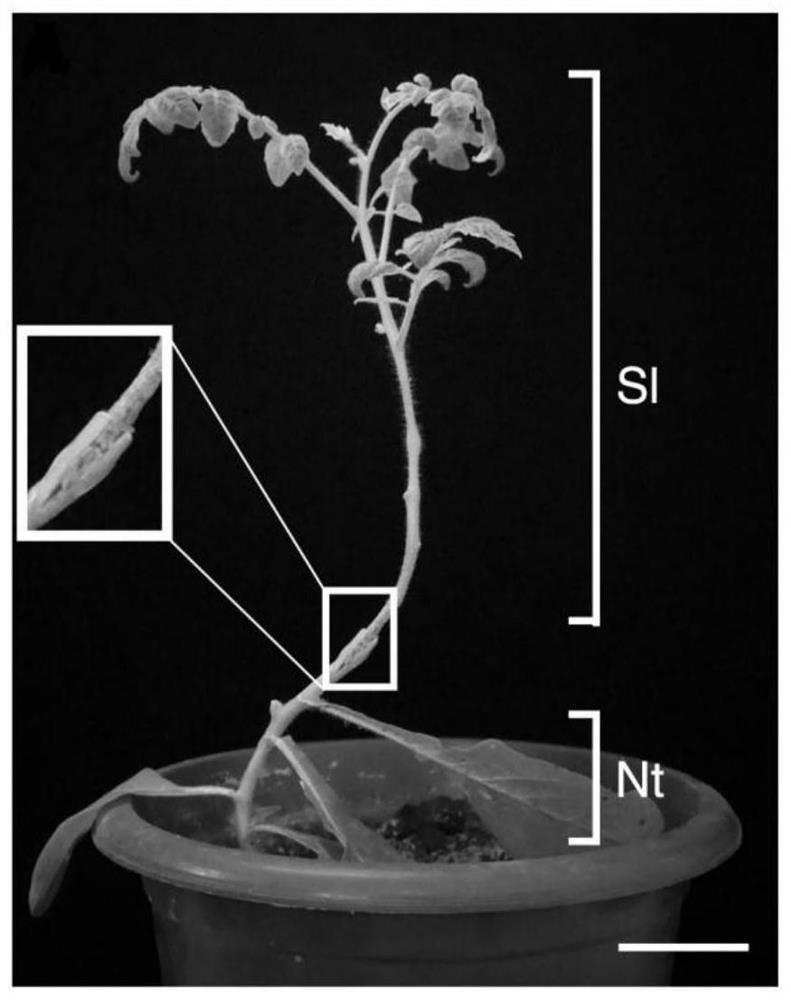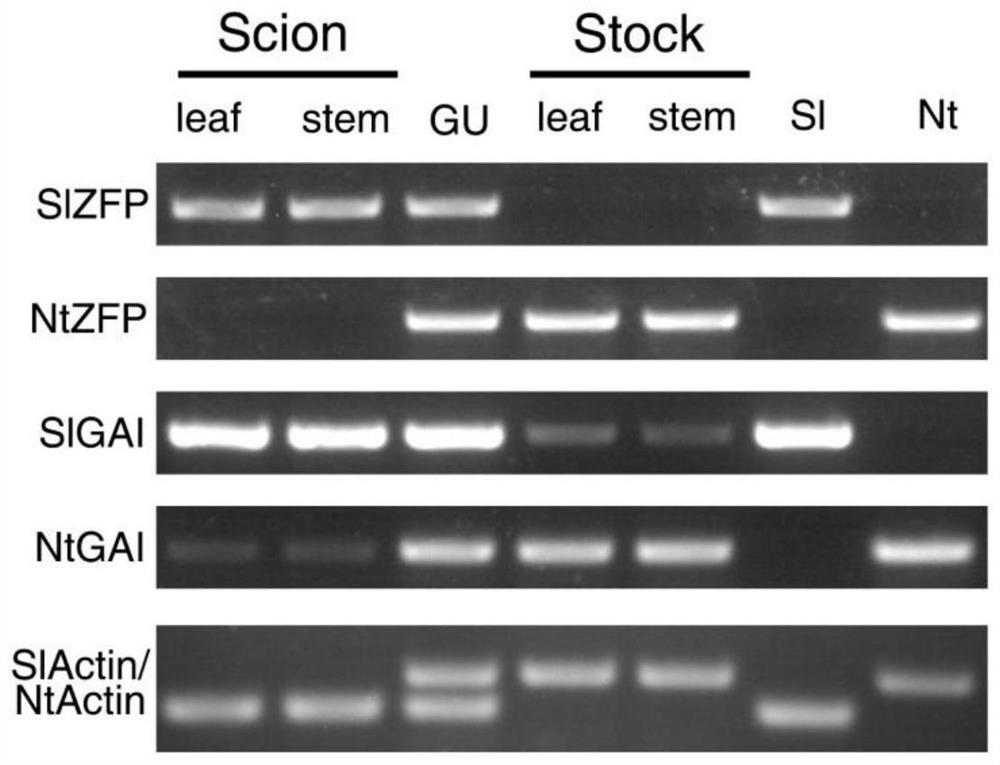Rootstock improvement method and application
A rootstock and gene technology, applied in rootstock improvement methods and applications, in the field of long-distance transmission of fragments between rootstocks and ears to carry functional genes to regulate the agronomic traits of scions, which can solve the problems of inconspicuous regulation of phenotypes, low transfer efficiency, and inability to be applied industrially
- Summary
- Abstract
- Description
- Claims
- Application Information
AI Technical Summary
Problems solved by technology
Method used
Image
Examples
Embodiment 1
[0126] Example 1: The process of obtaining transmissible gene sequences and constructing delivery vectors
[0127] 1. Transmissible gene sequence acquisition
[0128] tRNA Met , 3×CTCT, 3×(CTCT:tRNA Met ) were synthesized by Sangon Biotechnology Co., Ltd., and SalI and BglII enzyme cleavage sites were added at both ends of the sequence. See the sequence at the end of the article.
[0129] 2. Delivery vector construction (such as figure 1 shown)
[0130] tRNA Met , 3×CTCT, 3×(CTCT:tRNA Met ) and the pCAMBIA1305 vector are combined with SalI and BglII for double enzyme digestion, and the reaction system is shown in the following table:
[0131]
[0132] Perform agarose gel electrophoresis detection on the digested product, and recover target size fragments with the Axgen recovery kit. The steps are as follows:
[0133] (1) Put the cut gel into a 2mL centrifuge tube, add 500 μL of DE-A, sol at 65°C until the gel is completely dissolved, add 250 μL of DE-B, and put the ...
Embodiment 2
[0157] Example 2 Transferable Fragment Fusion Branching Functional Gene Regulates Branching Characters
[0158] 1. Tomato and Tobacco RNA Extraction
[0159] In order to amplify the full-length sequence of the SlZFP2 gene, the CTAB method was first used to extract RNA from tomato and tobacco leaves, and the specific steps were as follows:
[0160] (1) Preheat CTAB at 65°C, add 20 μL β-mercaptoethanol per 1 mL;
[0161] (2) Grind the sample in liquid nitrogen, take 0.5 g of the sample and put it into a 2 mL RNase-free centrifuge tube, add 1 mL of preheated CTAB, vortex for 30 seconds, and bathe in 65°C water for 10 minutes;
[0162] (3) Add 1mL CI (chloroform:isoamyl alcohol=24:1), and vortex;
[0163] (4) Place in a pre-cooled 4°C centrifuge at 13000rpm for 10min;
[0164] (5) Take the supernatant, add an equal volume of CI, and mix gently;
[0165] (6) 13000rpm in a centrifuge at 4°C for 10min;
[0166] (7) Take the supernatant, add 2 times the volume of isopropanol, and...
Embodiment 3
[0250] Example 3 Transmittable fragments fused with early flowering functional genes to regulate flowering traits (such as Image 6 shown)
[0251] In the previous study, we found that SlZFP2 can regulate tomato branching and also regulate tomato flowering period, so we further counted the flowering time of the above grafting system.
[0252] The results showed that: SlZFP2-tRNA Met , SlZFP2-3×CTCT, SlZFP2-3×(CTCT:tRNA Met ) tomato scion with transgenic tobacco as rootstock flowered earlier than the control SlZFP2, and SlZFP2-3×(CTCT:tRNA Met ) phenotype is the most obvious (such as Figure 5 shown). The above results indicated that the transmissible fragment fused the non-transmissible SlZFP2 early flowering functional gene into the scion, and finally translated into a functional protein in the scion to advance flowering.
[0253] The above examples illustrate: tRNA Met , 3×CTCT, 3×(CTCT:tRNA Met ) as a transmissible gene, can carry the non-transmissible functional gen...
PUM
 Login to View More
Login to View More Abstract
Description
Claims
Application Information
 Login to View More
Login to View More - R&D
- Intellectual Property
- Life Sciences
- Materials
- Tech Scout
- Unparalleled Data Quality
- Higher Quality Content
- 60% Fewer Hallucinations
Browse by: Latest US Patents, China's latest patents, Technical Efficacy Thesaurus, Application Domain, Technology Topic, Popular Technical Reports.
© 2025 PatSnap. All rights reserved.Legal|Privacy policy|Modern Slavery Act Transparency Statement|Sitemap|About US| Contact US: help@patsnap.com



